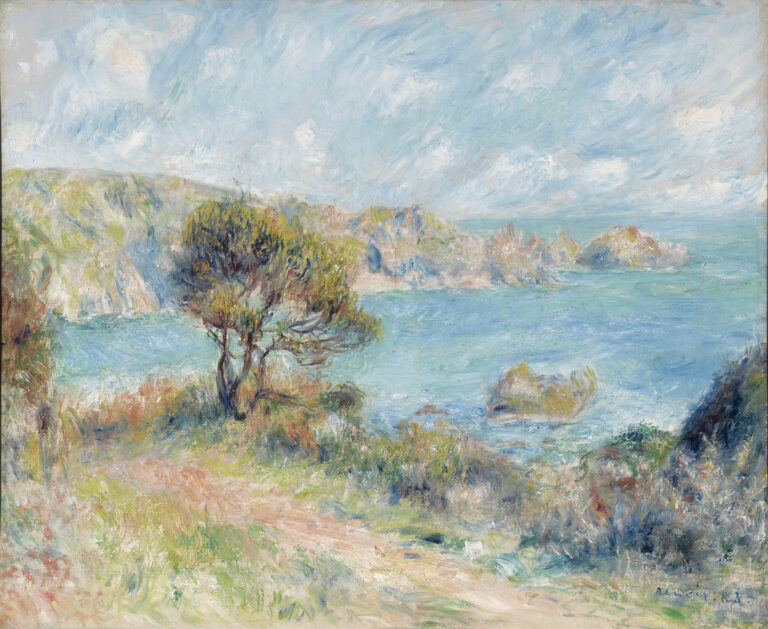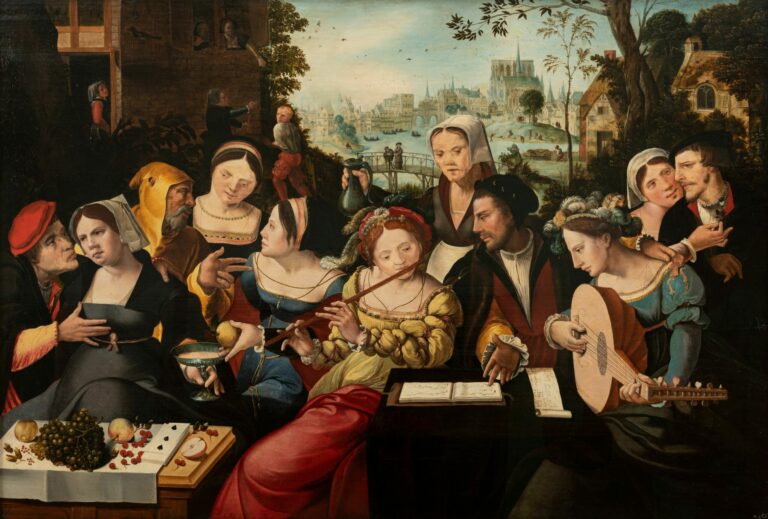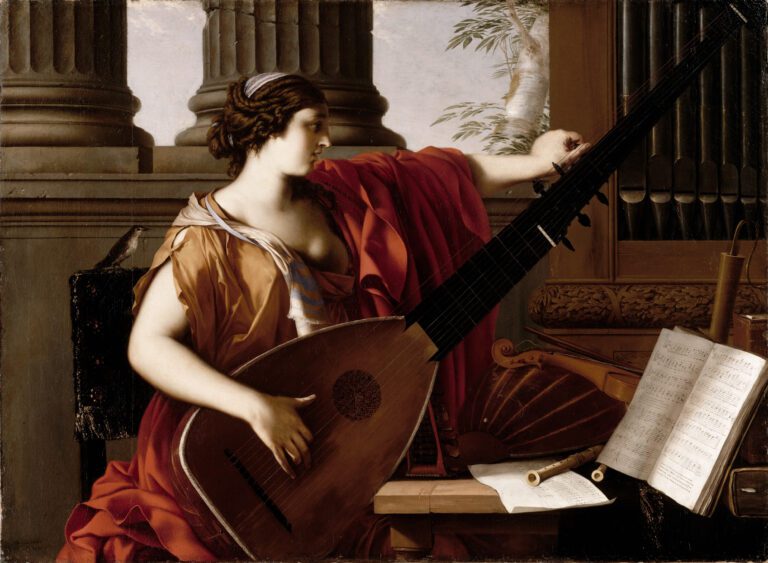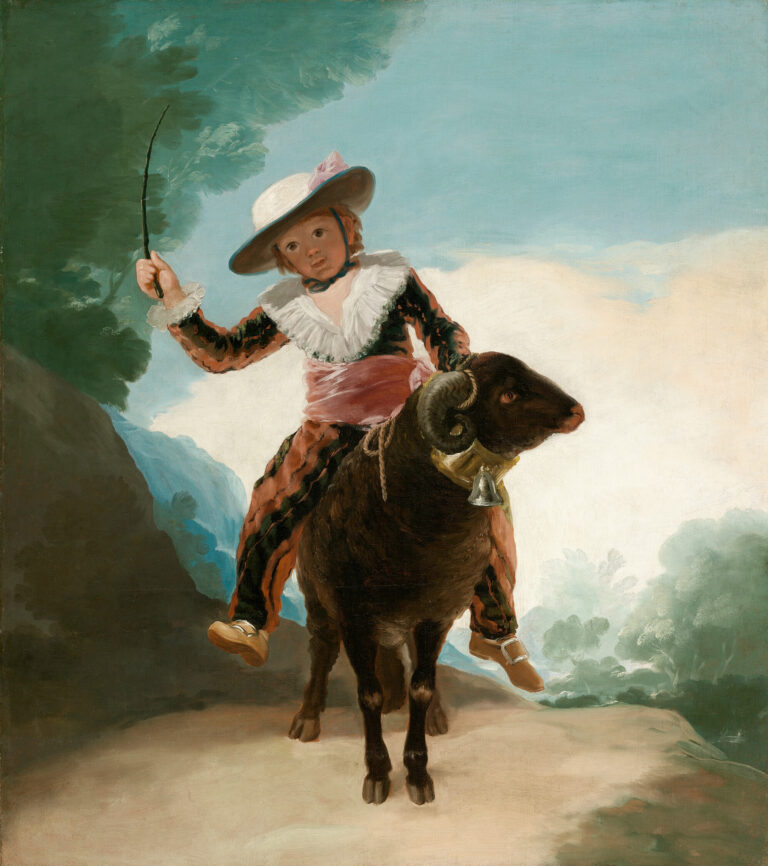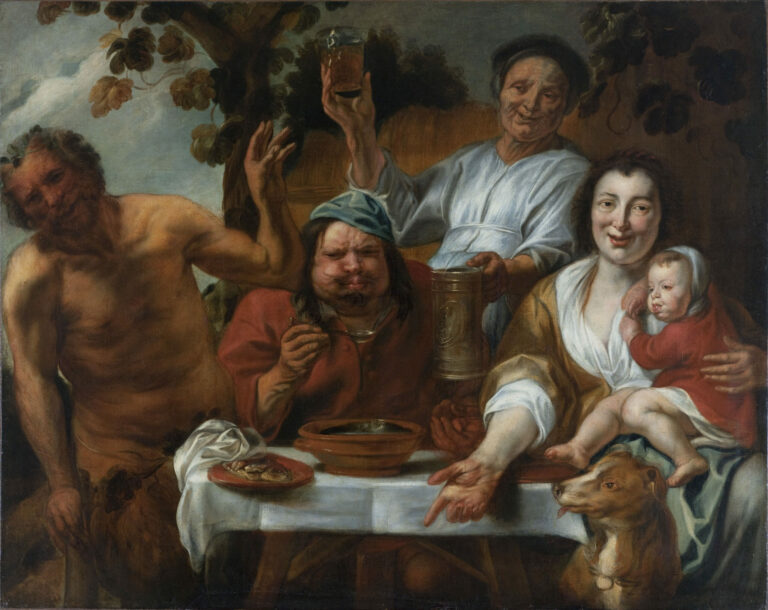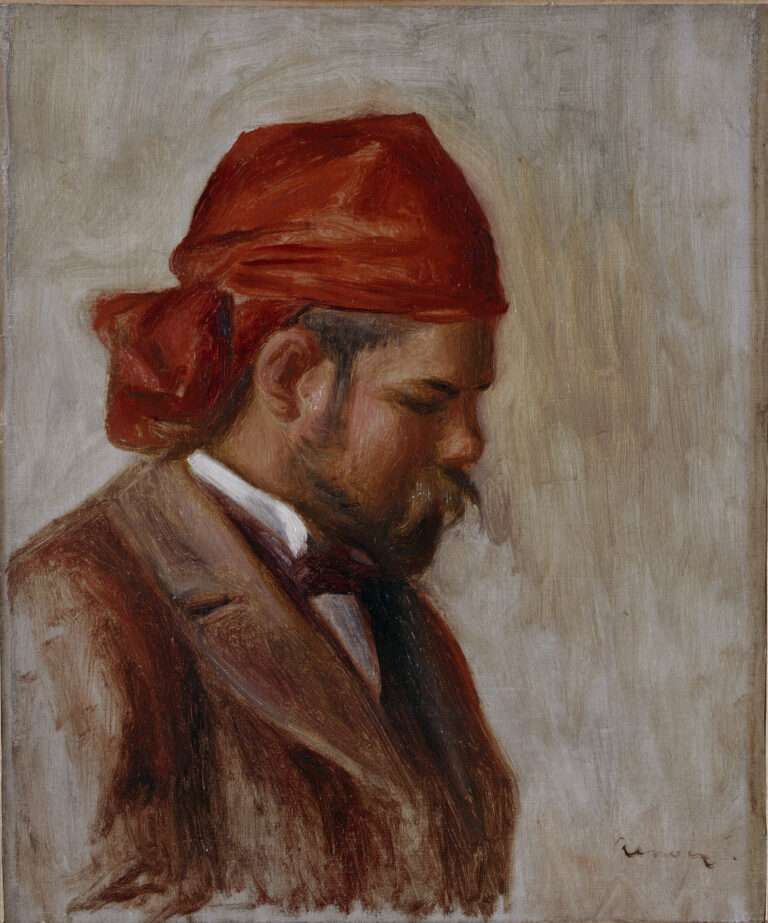
What a symphony of color and languor! In this masterful work, Gauguin captures the very essence of Polynesian rest, where time seems suspended between earth and dream.
The rose-hued wooden platform becomes a stage where figures surrender with sovereign grace. In the foreground, a woman in a blue-dotted hat and delicate garment radiates serenity, while beside her, other figures appear embedded in the tropical luminosity.
Orange, green, and pink tones converse in an almost musical harmony, conveying intimacy and communal relaxation. Each figure embodies a meditative presence, far removed from Western agitations. The fluid lines and vibrant colors narrate more than a simple nap—they express an art of living, a philosophy of repose that transcends cultures.
Further Context
- The Siesta by Paul Gauguin, painted between 1892 and 1894
- 35 x 45 3/4 in. (88.9 x 116.2 cm)
- The Metropolitan Museum of Art, Fifth Avenue, New York, displayed in Gallery 822
- https://www.metmuseum.org/art/collection/search/436449
Paul Gauguin (1848–1903), a major artist of the Pont-Aven School and the Nabis, left Europe in 1891 for Polynesia, fleeing a civilization he deemed artificial. As a post-impressionist painter, he sought in Polynesian cultures a primitive authenticity, far from academic conventions.
His works, marked by intense colors and simplified forms, profoundly influenced modern art, heralding Fauvism and Expressionism. Misunderstood during his lifetime, Gauguin is now recognized as a visionary genius who reinvented pictorial language. His relationships with young Polynesian women remain a source of controversy.

